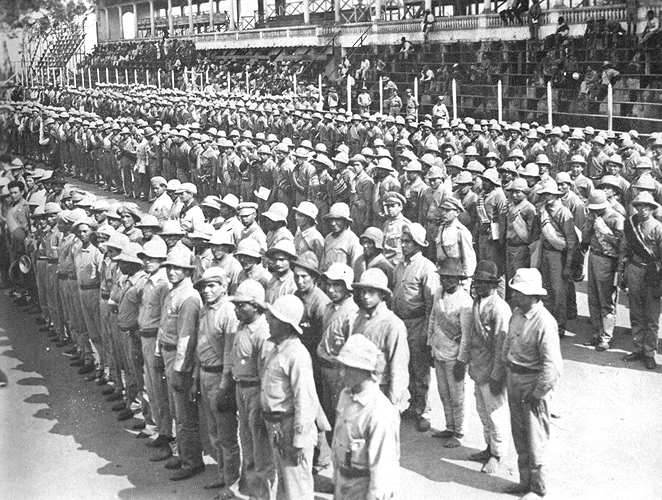
The Chaco War was a conflict between Bolivia and Paraguay over the wilderness region of Gran Chaco, known as Chaco Boreal. The origins of this conflict connect to the War of the Pacific against Chile which had left Bolivia landlocked with no access to the coast. In order to break from this, Bolivia attempted to take over via Rio de La Plata which led to the Atlantic Coast. This route was located in Gran Chaco which was a region that not only had the potential to break being landlocked but also was thought to have oil.
Gran Chaco held both Bolivian and Paraguay military posts. The military of Bolivia had more advantages that Paraguay yet Paraguay was more adapted to the swamps and jungles from the region. Paraguay declared war on May 10, 1933. During the war the Bolivian military was segregated and had a social caste implemented, given that Aymaras and Quechuas were the majority of the fighting soldiers. The war lasted to a truce until June 12 1935. The truce was arranged by the Chaco Peace Conference compose of Argentina, Brazil, Chile, Peru, Uruguay, and the United States. Reform was greatly demanded towards the Bolivian economy following the war due to a greatly deprived population: nationalization of mines, diversification of production, agrarian reform, and territorial integration.
The importance of this war came from it ending the traditional political ideology known for Bolivia due to its illustration of the failures social structure. In other words, the neocolonialism could be said to have generated nationalism among the masses.
Works Cited
“Chaco War.” Encyclopædia Britannica. https://www.britannica.com/event/Chaco-War
Vila De Prado, Roberto. “Popular Revolutionary Nationalism in Bolivia (Ideological Formations and Transformations, 1930 – 1955).” Revista de Humanidades y Ciencias Sociales (Santa Cruz de la Sierra). Universidad Autónoma “Gabriel René Moreno”. Accessed May 1, 2021. http://socialsciences.scielo.org/scielo.php?script=sci_arttext&pid=S1819-05452006000100001
